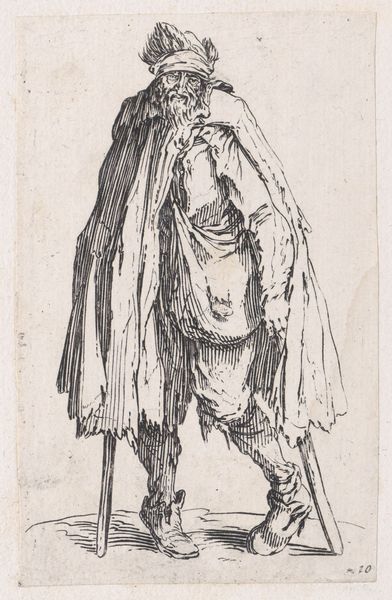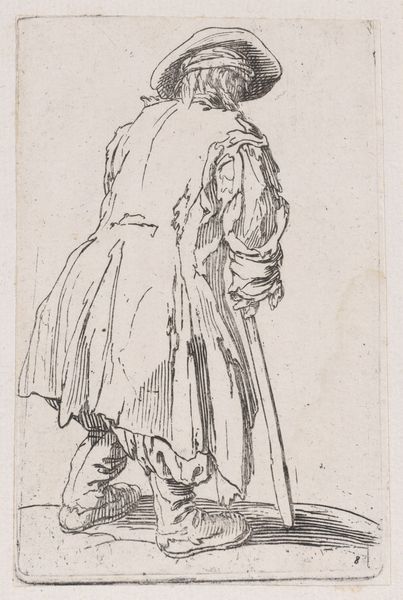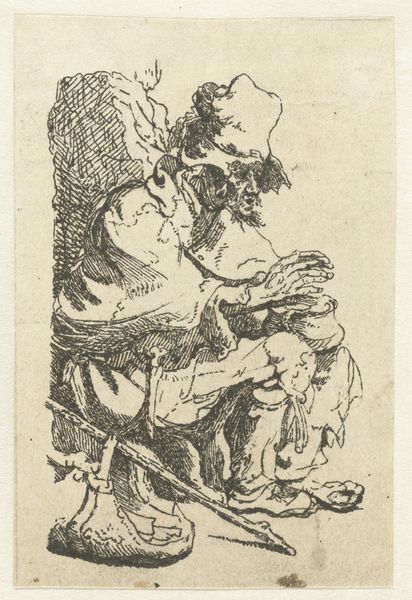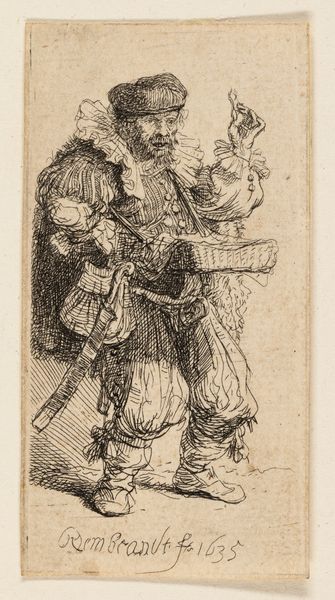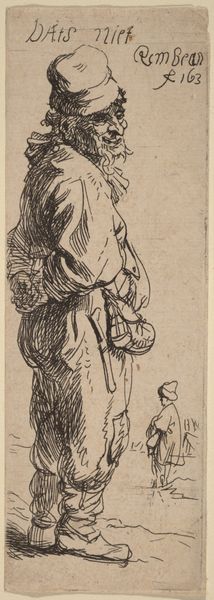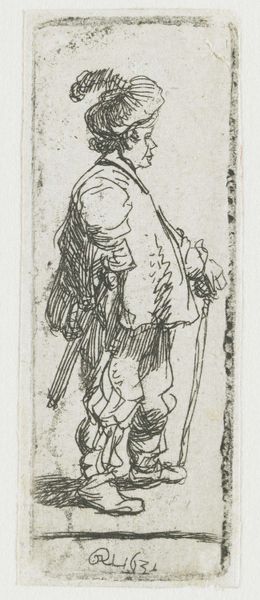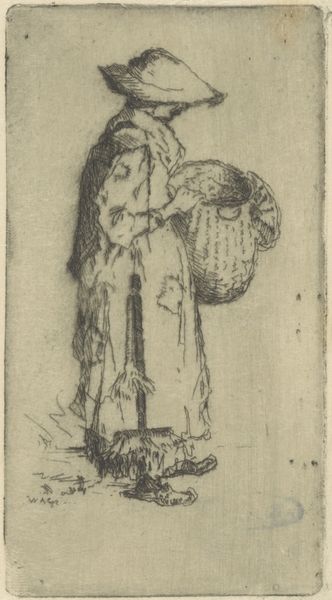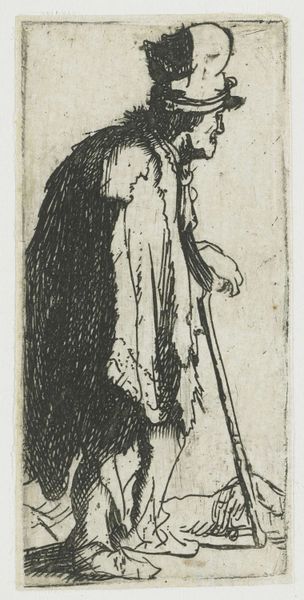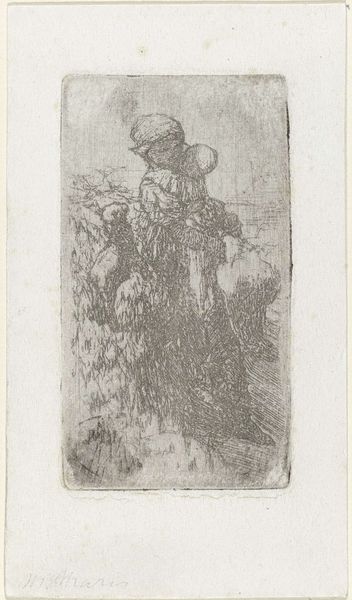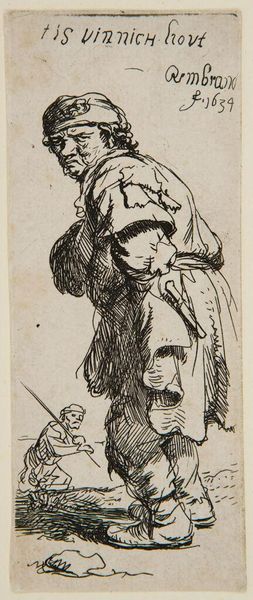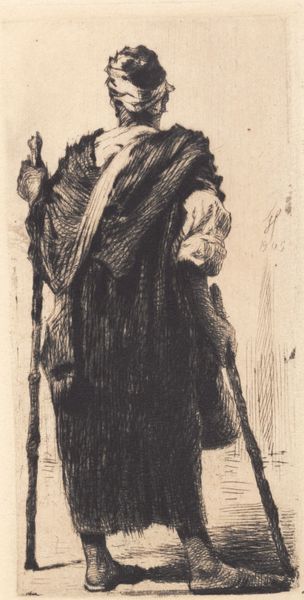
drawing, print, etching
#
portrait
#
drawing
#
baroque
#
dutch-golden-age
# print
#
etching
#
figuration
#
genre-painting
#
realism
Copyright: Public domain
Curator: Rembrandt van Rijn's etching, "Old Beggar Woman with a Gourd," created around 1629, offers us a stark portrayal of poverty during the Dutch Golden Age. Editor: The texture alone is immediately striking—all that wiry line work building up shadow. It lends the figure such weight, such sorrow. Curator: Rembrandt's use of etching here is quite intentional; prints like these served as a crucial medium for circulating images and social commentaries widely during the 17th century. This portrayal, part of a larger series, highlights the margins of Dutch society amid burgeoning global trade. Editor: Looking closer, you can really trace the movement of his hand. See how those dense lines suggest the weight of the woman's garments, the gourd she carries. Notice that slight contour hatching indicating that we perceive the curve of her hip through the heavy drapery? It’s all expertly, deliberately done to create both mass and dynamism, capturing that feeling of weariness in motion. Curator: It’s vital to remember how Rembrandt challenges prevailing notions of beauty and social status. Here, rather than glorifying the wealthy merchant class typically immortalized in paintings of the era, he focuses on the marginalized. One has to consider how Rembrandt leverages his skills and workshops to represent ordinary and marginalized populations. Editor: Absolutely, and technically speaking, those stark contrasts – light versus deep shadow – really amplify that emotional intensity, drawing your eyes into the intricate detailing, while losing definition, thereby emphasizing an aged, weathered surface. I wonder about that gourd. Curator: Gourds had associations with poverty but could also reference more broadly themes of transience and the earthly experience within contemporaneous allegories. These were sold quite successfully in print shops around Amsterdam, giving them access to a variety of publics and domestic settings. Editor: He's not simply depicting poverty; he's constructing a compelling visual argument about society and pushing the technical boundaries of etching, all in one image. The scale adds something intimate to the moment, don't you think? Curator: It does, doesn’t it? By choosing etching and its circulation networks, Rembrandt participates in dialogues concerning social responsibility within this Golden Age. Editor: Exactly. That intense materiality adds such power and resonance to a supposedly fleeting moment.
Comments
No comments
Be the first to comment and join the conversation on the ultimate creative platform.
